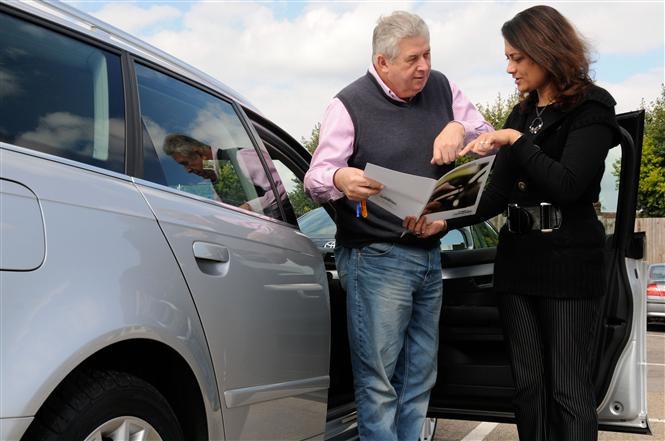There are four main ways to sell your car. The first is to part-exchange it with the dealer you’re buying your new car from. This wraps up the sale of the old and new purchase in one deal. It also means you are not without a car as you can hand over the outgoing car when you collect the new one.
Keep it simple
Simplicity is the big attraction of part-exchange, whether choosing a new or used car from a dealer. However, dealers want to maximise their profit so will offer the lowest price they can for your old car. This increases the cost to change for you, which is the difference between the new car price and the part-exchange value offered.
You can negotiate the part-exchange price upwards, but dealers will then refuse to lower the cost of the new car as they will have a fixed margin for any deal they will not budge on. To find out what your car is worth compared to a dealer’s quote, use Parkers valuations for an accurate part-exchange price.
Selling your old car
Buying a new car with cash helps you haggle on the price, which means selling your old car beforehand to free up funds. The oldest method for selling cars is a private sale via a classified advert. Most sellers now use online classifieds, such as the Parkers Cars for Sale section that lets buyers from all over the country view your car.
Other classified methods are also worth exploring, such as an ad in the local newspaper or supermarket, which work well for cars at the lower end of the price scale. You could also try social media, such as Facebook and Twitter, to spread the word your car is for sale.
Watch out for…
A private sale should net you a better price, but check the buyer’s funds have cleared before handing over the car. If they pay by cash, ask your bank to check the notes are genuine. For any test drive, ask the buyer to prove they have insurance. At any point, if you are uncertain the buyer is genuine, you can refuse to sell the car as it’s your property.
Two other routes to selling your car so you have cash to buy the new one are auctions and car buyer services. Auctions are a quick way to sell a car, but you will get the lowest market value for it. You will also have to pay a seller’s premium, usually between five and 10 percent.
Car buying services are also quick and pay the money directly into your bank. However, the price will be little more than a part-exchange valuation, so it’s speed and ease of sale versus the best price with this option.
Whichever option you prefer for selling your old car, it’s worth giving it a thorough clean inside and out before it’s valued. Make sure the wheels are clean and the car runs properly too. Have all of the car’s service history, maintenance, logbook and spare keys to hand, but don’t hand them over until you have been paid for the car. Always be honest when describing the car to a seller as you are legally obliged to be truthful. You can use a history check service to back up your description.
Conclusion
You will need to do your homework before selling your existing car. This could mean checking out part-exchange prices with more than one dealer as well as a car buying service.
Don’t rule out advertising the car privately at the same time to give yourself the most options possible. Many people will choose to part-exchange for the simplicity it offers, while others will hold out for the best deal. Which suits you best is down to personal preference, but do your research as knowledge is the most powerful tool whether selling or buying a car.





